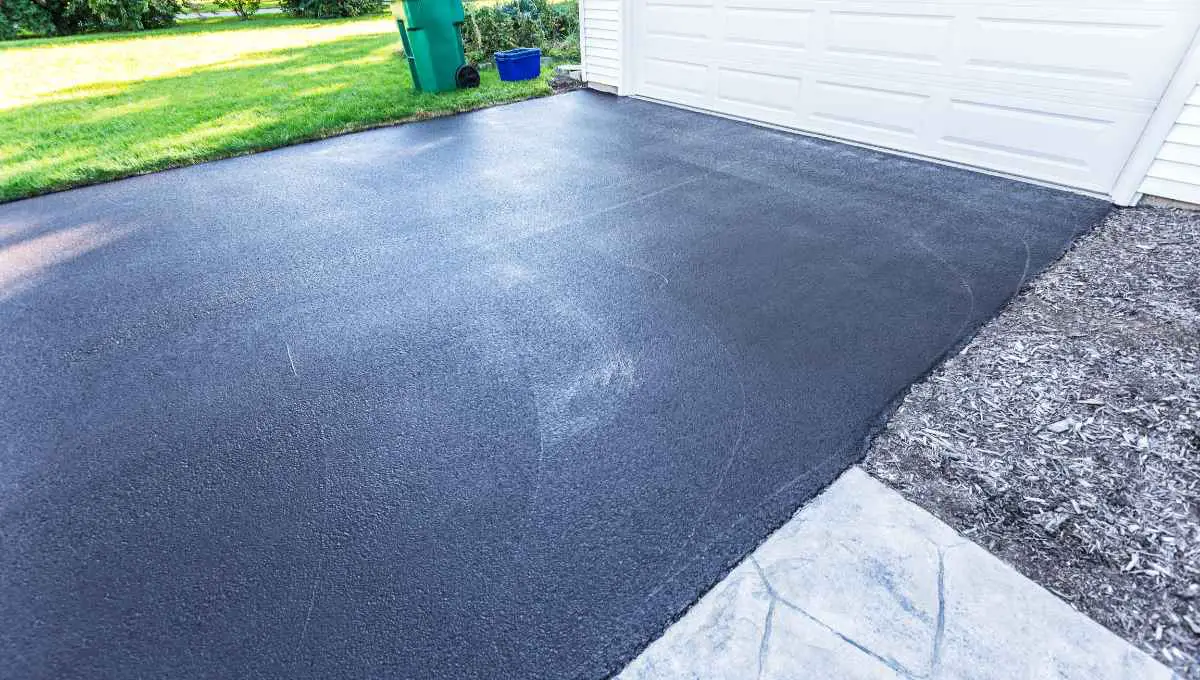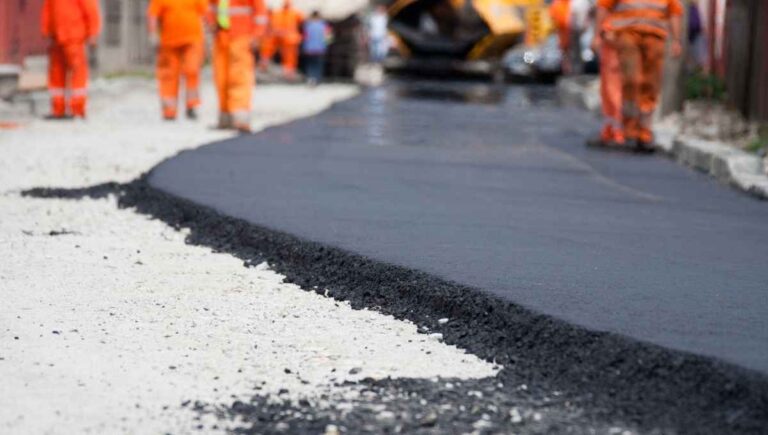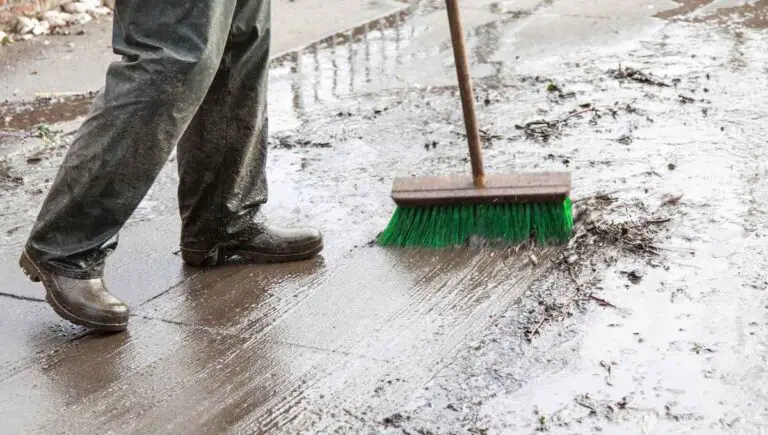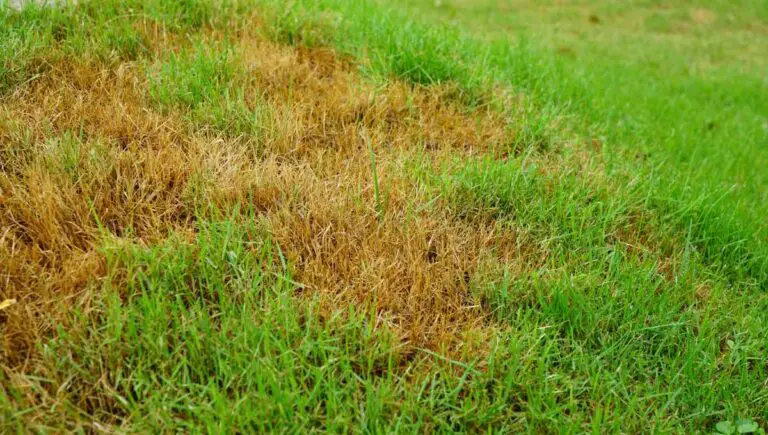How Long Does Driveway Sealer Take to Dry? (We Timed It)

Sealing your driveway is an important step in protecting it from the elements and extending its lifespan. But, once you’ve applied the sealer, you want to know how long you’ll have to wait before you can use it again.
On average, it can take anywhere from 24 to 48 hours for driveway sealer to fully dry. The drying time of driveway sealer can vary depending on several factors such as temperature, humidity, and the type of sealer used.
Unfortunately, circumstances outside your control sometimes prohibit following the recommended wait. So, we’re going to talk about what happens if you don’t wait, what you can do about the weather, how often driveways need to be resealed, and more. You don’t want to miss this!
This post contains affiliate links from Amazon and other stores. This means Yard Blogger may earn a commission if you make a purchase using any of our links. Please refer to our full affiliate disclosure policy for full details.
Here’s a Quick Pro Tip!
However, to do the best job you can, you need the best tools. We’ve gathered the common tools needed to reseal a driveway, so you can be sure you have everything you need before starting. Check it out:
1. Power Washer – Before you start, you need to ensure your driveway is clean!
2. Long Brush – Make sure the sealant is spread evenly.
3. Sealant – The most important part!
How Long Before You Can Walk and Drive on a Sealed Driveway?
You should always wait at least 24 hours after sealing a driveway to walk on it. However, just because it’s dry and safe to walk on doesn’t mean the curing process is complete. Full curing often takes up to 30 days.
The amount of time it takes a seal coat to dry also depends on environmental factors. The warmer the climate, the faster it’ll dry. In very warm weather, sealant can dry to a usable degree in only a couple of hours. If it’s cold, it may take up to 48 hours.
It’s Worth It to Wait
Failure to wait until the sealant is dry to walk on your new driveway is bad for the driveway. It may seem dry when you touch the top, but similar to paint, it may still be wet underneath, and if you put weight on the still-wet sections, you may leave grooves or dents in the soft seal coat underneath.
Those grooves and dents leave space for water to get under your seal coating, undermining the entire process and potentially causing damage. While you can try to even it out after, odds are you’ll need to strip it and reseal.
You can tell if the sealant isn’t completely dry if you lightly touch the top. If it’s still wet to the touch, or if it moves underneath when you touch it, don’t put weight on it yet. Any movement means it’s still wet underneath, and adding weight will cause dents and grooves to form.
If you’re unsure, it’s best to wait at least 48-72 hours before you attempt to walk or drive on your new driveway. After all, you want your sealant to last as long as possible.
Rain Concerns
Before you start the process of sealing your driveway, be sure to check your local weather. If it looks like it will rain, wait to do your project. Rainwater getting into your driveway before the sealant dries can have negative effects on the sealant’s ability to bond with your driveway.
The good news is the sealant only needs to dry for about eight hours before it’s exposed to moisture, so if there is an unexpected rainshower the next day, your driveway should be fine.
The earlier in the day you start your seal coating project, the better it’ll be for you. If the seal coat is exposed to direct sunlight, it’ll dry even faster. In extreme sun conditions, a seal coating can dry enough to walk on in as little as six hours, though we don’t recommend driving on it that fast!
It’s likely, not okay if it rains right after sealing a driveway. If the sealant hasn’t had time to dry, it is at risk of washing away. If it’s partially dry, it may end up with divots and grooves from the sealant partially melting off in the rain.
Determining How Often to Seal a Driveway
You want to keep your driveway sealed because the sealant protects the driveway from the elements. However, sealing too often can be just as detrimental as not sealing at all. So before you rush out and buy lots of sealant, stop and consider when the last time you sealed your driveway was.
If it’s been less than two years, it’s probably not time to reseal it yet. However, if you’re noticing that your driveway is cracking or crumbling, if there is standing water, or if the pavement is discolored, it’s time.
Don’t Wait Too Long
You don’t want to wait more than two to three years before resealing your driveway. Waiting too long may put your driveway at risk for water damage. Additionally, without sealant, the driveway may start to crumble.
Once the driveway has started crumbling, resealing may not be enough. At a certain point, the driveway will need to be redone, not just resealed. However, that is a much longer and more expensive project, which can be avoided by resealing on time.
Don’t Go Overboard on Frequency
However, that doesn’t mean you should just reseal your driveway whenever you feel like it. Homeowners should only reseal driveways every couple of years. More frequently, and you can actually cause more damage!
The extra sealant will start cracking and peeling on your driveway. These cracks will allow water into your driveway and may speed up the driveway’s deterioration.
You should reseal your driveway in the summer, on a warm day when it’s not supposed to rain. You want to avoid your sealant getting wet until after it’s had a chance to fully dry, a process that typically takes at least eight hours and up to two days.
It Takes as Long as It Takes
There is no magic way to make your driveway sealant dry faster. If you choose a sunny day and start early, the sun will be on your side, and it may dry more quickly. However, you should be prepared for the worst.
Consider purchasing some tarps to protect your driveway after resealing, especially if you live somewhere where it rains often. Rain getting into your sealant is one of the worst things that can happen, as it damages the sealant and keeps it from bonding correctly.
Ensure you give your newly sealed driveway at least 24-48 hours before driving heavy vehicles over it. Not waiting can lead to damage to the driveway and a costly repair bill!
Final Thoughts
It may be inconvenient to wait for your newly sealed driveway to dry. But it’s worth the wait. Keeping up with sealing your driveway goes a long way to protecting it and gives the driveway a longer lifespan.
After all, it’s better to reseal the driveway every few years than have to tear the whole thing up and redo it because it’s getting holes and cracks! Luckily, with some sealant, you should be good to go for years!












